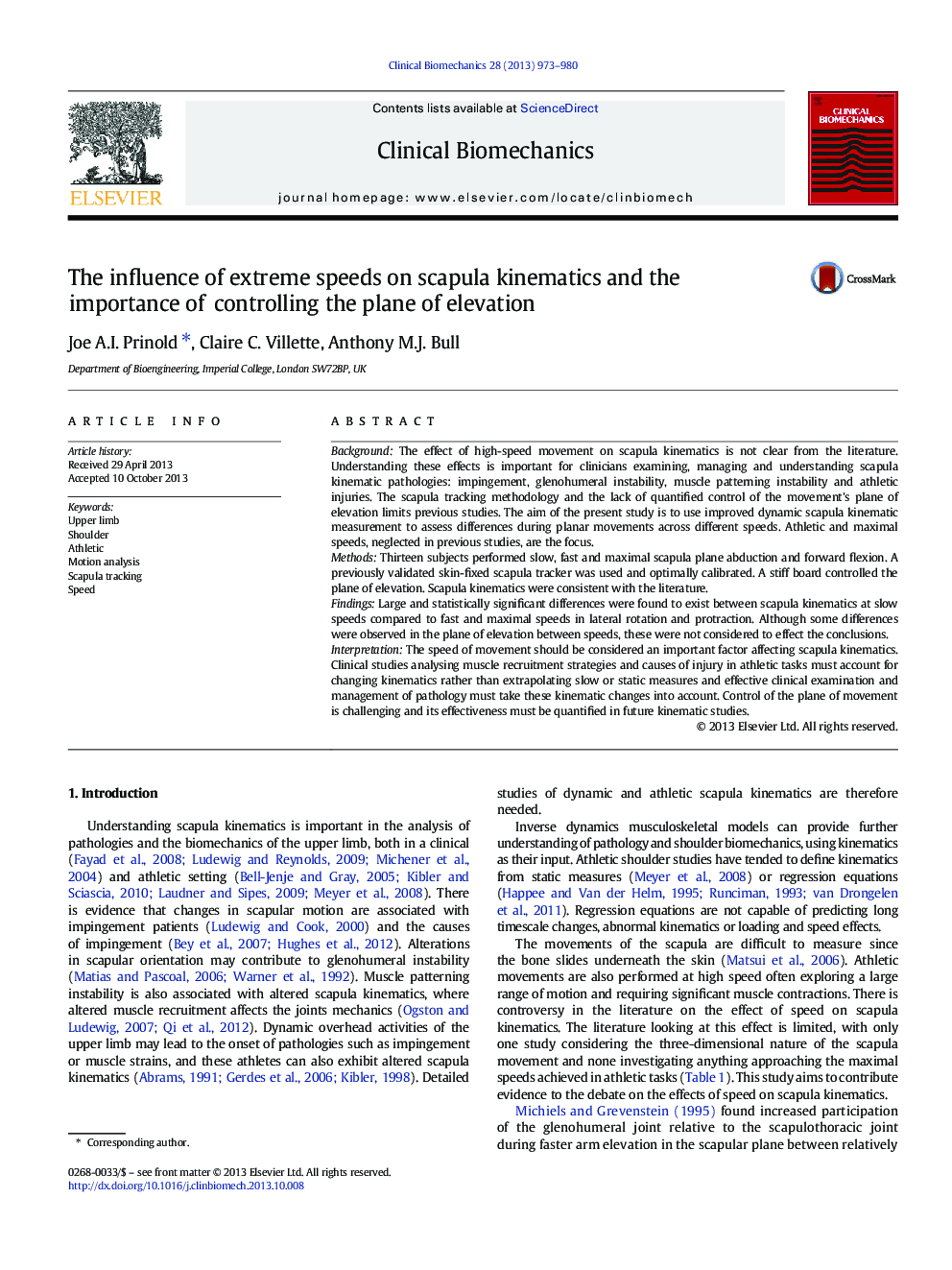| Article ID | Journal | Published Year | Pages | File Type |
|---|---|---|---|---|
| 6204810 | Clinical Biomechanics | 2013 | 8 Pages |
BackgroundThe effect of high-speed movement on scapula kinematics is not clear from the literature. Understanding these effects is important for clinicians examining, managing and understanding scapula kinematic pathologies: impingement, glenohumeral instability, muscle patterning instability and athletic injuries. The scapula tracking methodology and the lack of quantified control of the movement's plane of elevation limits previous studies. The aim of the present study is to use improved dynamic scapula kinematic measurement to assess differences during planar movements across different speeds. Athletic and maximal speeds, neglected in previous studies, are the focus.MethodsThirteen subjects performed slow, fast and maximal scapula plane abduction and forward flexion. A previously validated skin-fixed scapula tracker was used and optimally calibrated. A stiff board controlled the plane of elevation. Scapula kinematics were consistent with the literature.FindingsLarge and statistically significant differences were found to exist between scapula kinematics at slow speeds compared to fast and maximal speeds in lateral rotation and protraction. Although some differences were observed in the plane of elevation between speeds, these were not considered to effect the conclusions.InterpretationThe speed of movement should be considered an important factor affecting scapula kinematics. Clinical studies analysing muscle recruitment strategies and causes of injury in athletic tasks must account for changing kinematics rather than extrapolating slow or static measures and effective clinical examination and management of pathology must take these kinematic changes into account. Control of the plane of movement is challenging and its effectiveness must be quantified in future kinematic studies.
